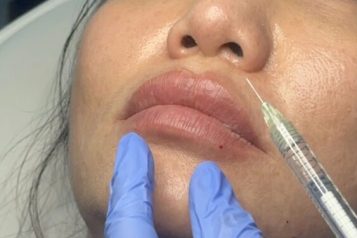Bad breath, or halitosis, is more than just a social nuisance—it can signify deeper health issues and poor oral hygiene. By understanding the underlying causes and the importance of maintaining good oral care, you can prevent and manage bad breath effectively. But what exactly are the primary causes of halitosis and what are the best practices for keeping your breath fresh and clean?
 Photo Credit: Courtesy of Shutterstock
Photo Credit: Courtesy of Shutterstock
Primary Causes of Bad Breath (Halitosis)
Bad breath can stem from various factors, with the buildup of bacteria being the most prevalent. Other significant contributors include:
- Diabetes: This condition can cause a distinct fruity or acetone odor due to elevated ketone levels.
- Dry Mouth: Saliva is crucial in cleansing the mouth and neutralizing acids. Reduced saliva flow, often caused by dehydration or certain medications, can lead to bad breath.
- Smoking: Tobacco products cause their own foul odor and dry out the mouth, creating an environment conducive to bacterial growth.
- Acid Reflux: This condition can lead to bad breath as stomach acids frequently flow back into the esophagus, leading to an unpleasant odor.
The Role of Oral Hygiene in Preventing Bad Breath
Poor oral hygiene is a primary driver of bad breath. When oral hygiene is neglected, bacteria in the mouth multiply and release volatile sulfur compounds (VSCs), which have a foul smell. Here’s how inadequate oral care contributes to this issue:
- Bacterial Growth: Food particles left in the mouth serve as a food source for bacteria. As these bacteria metabolize the particles, they produce VSCs, leading to bad breath.
- Plaque and Tartar: Without regular brushing and flossing, plaque forms on the teeth, eventually hardening into tartar. Both can harbor bacteria that produce unpleasant odors.
Effective Oral Hygiene Practices
Maintaining good oral hygiene is key to preventing bad breath. Here are some practices that can help:
- Flossing: Removes food particles and plaque from between the teeth where a toothbrush cannot reach.
- Electric Toothbrush: More effective than manual brushing in removing plaque and reducing gum disease.
- Tongue Scraping: Eliminates bacteria, food particles, and dead cells from the tongue, a common source of bad breath.
- Staying Hydrated: Ensures adequate saliva production, which helps wash away food particles and bacteria.
- Leafy Greens: Consuming these can increase saliva production and neutralize acids in the mouth.
Medical Conditions and Bad Breath
Even with impeccable oral hygiene, certain medical conditions can cause bad breath. These include:
- Diabetes: Poorly controlled diabetes can lead to the production of ketones, which cause a distinctive odor.
- Kidney Disease: This condition can result in breath that smells like ammonia.
- Bronchitis: Respiratory infections can produce foul-smelling mucus.
- Medications: Some medications, particularly those for anxiety and depression, can reduce saliva production, leading to dry mouth and bad breath.
The Impact of Diet on Breath Odor
What you eat and drink significantly influences your breath. Certain foods can exacerbate bad breath, while others can help mitigate it. For instance:
- Carbohydrates: These are essential as they help in breaking down proteins. A diet low in carbohydrates can lead to the production of ketones, which cause bad breath.
- Water and Leafy Greens: Staying hydrated and consuming water-rich foods helps maintain saliva flow and neutralize mouth acids.
Bad breath is often more than just a minor inconvenience; it can be a sign of underlying health issues or poor oral hygiene. By understanding the causes and implementing effective oral hygiene practices, you can maintain fresh breath and overall oral health. Regular dental check-ups, a balanced diet, and proper hydration are also key components in the fight against bad breath. Stay proactive in your oral care routine, and enjoy the confidence that comes with fresh breath.
For any questions, visit Dr. Nammy Patel at Green Dentistry in San Fransisco, California.
For more information, visit Dr. Brian A. Levine's social media:

























